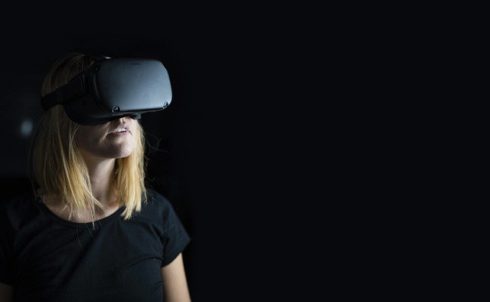
Two products were announced this year that together would seem to create an unparalleled opportunity for developers. That opportunity is to create virtual worlds for both consumer and commercial audiences. As we continue to struggle through the coronavirus pandemic, the need for more in-home entertainment and work collaboration alternatives is sharply increasing.
People want to get away, they want their kids out from under their feet, and they need better ways to work with their peers safely and remotely. Two products focused on developers together provide a path to meeting this increasing need. They are HP’s new Omnicept solution and NVIDIA’s Omniverse Machinima solution. The two firms are working together to flesh out a combined solution. The result could be fantastic for developers.
Let’s explore that.
Defining the need
Most of us are still locked up at home and, if you are like me, going a little stir crazy. VR had the promise of providing an at- home way to explore new worlds and even collaborate virtually, but much of the consumer-focused hardware was of low quality, and the software didn’t step up to the challenge. As a result, those who have VR headsets aren’t using them to address this need for entertainment and collaboration. The industry is missing the related revenue and needs a critical set of tools focused on the problems.
You can create 3D images in a virtual world and manipulate them as a group if that group is connected and has the proper hardware. When HP brought their first Reverb headset to market, they mainly fixed the hardware part with a high-resolution offering, higher comfort, and a better industrial design. HP recently refreshed that offering with its second-generation product, the HP Reverb G2, which had improved cameras, sound, and even higher quality. That set a new hardware baseline, but we still needed to focus the result on the problem.
HP Omnicept
HP Omnicept begins with a modified HP Reverb headset with more sensors and a more collaborative focus. Those sensors monitor the eyes, put a camera on the mouth, and monitor heart rate. The eye sensors lower hardware requirements, only rendering what the eye sees and reporting back what the eyes are doing while the mouth camera picks up mouth movements. Both eye and mouth sensors are critical to conveying emotions from the user through an avatar that might be placed into a virtual world. In addition, the cameras on the outside of the headset can capture 90% of arm movements, adding to creating more realistic avatars. The SDK and services that wrap this solution allow developers to create avatars that can act and react like their users in a virtual world, but we still need that virtual world.
NVIDIA Omniverse
What NVIDIA Omniverse Machinima brings to the table is that virtual world. Game elements developers can build rich worlds that these avatars can explore for entertainment or use for virtual meetings. The avatars can move through those worlds using tools like the HP Omnicept headset and SDK as if they were in the real world. Textures, photorealism, physics, and environmental elements like lighting and NPCs (Non-Player Characters) can be added for realism. All worlds that people could vacation or work in become possible, opening a massive opportunity for developers. Face animation is built into the tool. All it needs is HP’s Omnicept headset to feed the animation (default is to animate by sound, but that won’t provide the level of realism possible from instrumenting the face). Imagine having meetings in a virtual castle, an office building that has yet to be built, or collaborating on a design in a virtual lab.
We have an increasing need to provide safe ways for people to work, play, and unwind. VR had the potential to create this solution but, up until recently, didn’t step up to the challenge. HP with its Omnicept and NVIDIA with its Omniverse Machinima effort provide the potential, with the help of developers, to meet this massive and growing pandemic-sourced need. Now it is just a matter of time before a focused developer puts these two tools together and creates the next significant collaboration, entertainment, or virtual vacation offering. The only remaining question is, who will be up for that task?






